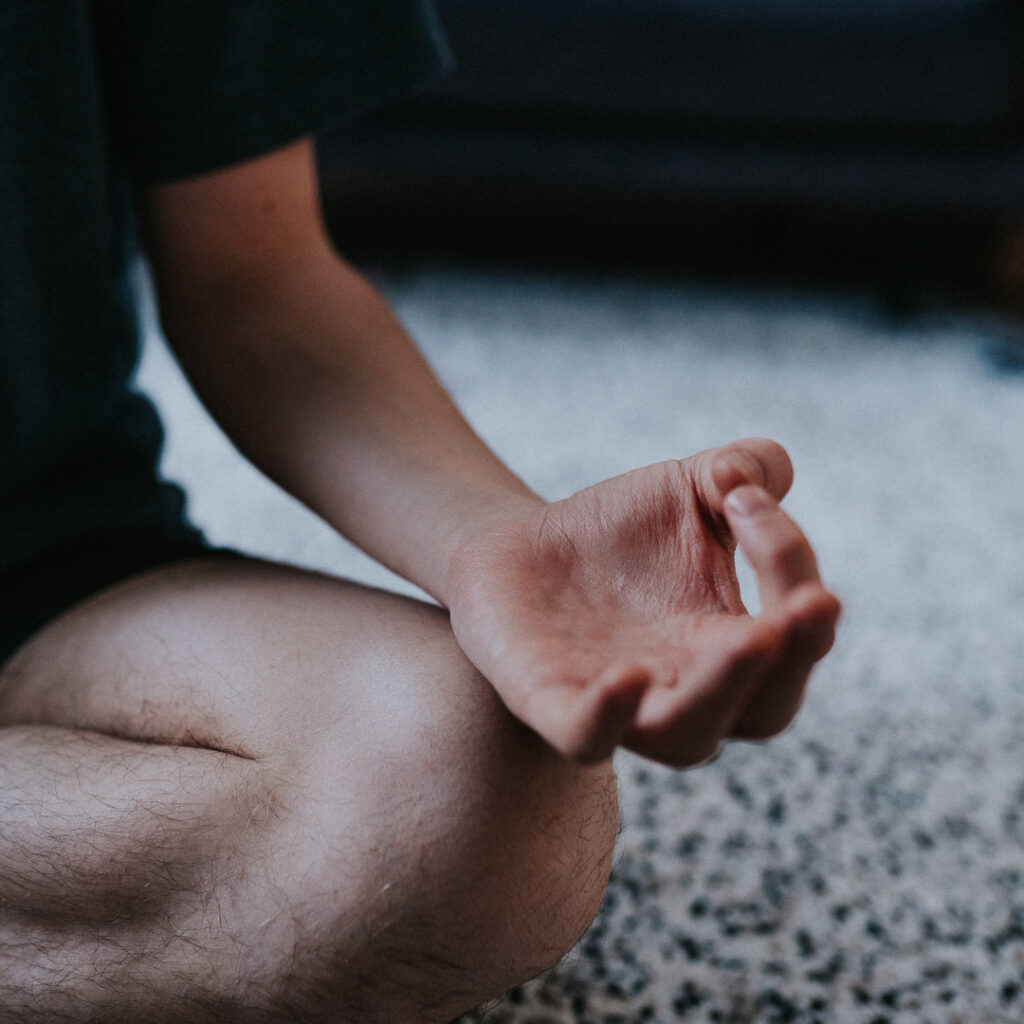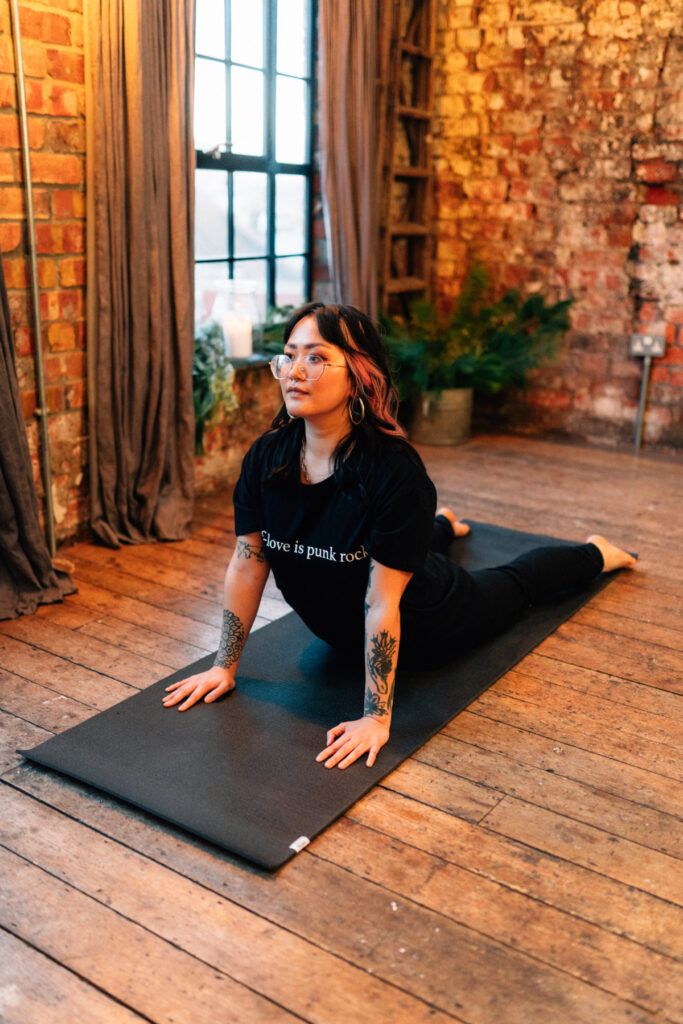Making Meditation Your Best Mate
post by Emily Sockett
When you’re trying to improve your mental health, it can feel like you are fighting a battle against your mind. In this blog Em explains how practising meditation can help you make peace with your thoughts and shares some of HATW’s favourite methods for achieving a zen-like state.
The first time I tried to meditate, I couldn’t stop thinking about how much washing-up there was sitting in my sink. I spent the whole 15 minutes getting frustrated that my mind wasn’t ‘empty’, that I wasn’t doing it ‘right’, and that I hadn’t put that sticky oven tray to soak overnight.
You’ve probably had similar experiences: whilst relaxing and not having to think about anything sounds wonderful and easy, it can actually be an incredibly frustrating and difficult thing to achieve!
It’s called meditation *practise* for a reason
A few years after my first attempt I gave meditating another go with the help of the Headspace app. All of a sudden I realised that meditation is a bit like any other ‘hobby’; you’re not going to be an expert on your first attempt. It was unreasonable of me to expect to achieve the zen-level of a Buddist monk when my brain was so used to churning through ideas, thoughts and worries faster than you can say “namaste”.
The best tip I can share with you is this: your brain is like a muscle – you need to train it. You wouldn’t start lifting heavy weights at the gym without building up your strength with the smaller ones first.
The same applies to your mind; start small, and work your way up to the more difficult meditations (Four hours of total peace and serenity sounds great, but I’m not there yet!). Five minutes is more than enough time to practise at the start, and if you start thinking about that washing up, or that friend you need to text back? Don’t sweat it – thoughts are natural and normal. Over time, your mind will become better at quieting those random bits and pieces that pop up!
Here’s five top methods that I can personally vouch for; they should help you on your journey from Apprentice to Master Meditator:
1. Ten Breaths
Difficulty Level: Easy
Best Time to Practise: When you’re trying to fall asleep
You’ve heard of counting sheep, and this isn’t so different! In fact, I could argue that counting sheep is a form of meditation in itself; you’re focusing on something simple and repetitive to help quieten your mind and help you drift off to the land of nod.
Whenever I practise this one, I fall asleep within minutes! Great for those nights when your brain just won’t switch off.
- All you need to do is count your breaths – 1 for in, 2 for out, 3 for in, 4 for out, and so on. Stop when you get to 10, and then start again.
- You don’t need to change your breathing in any way, just relax and allow your mind to focus on the feeling of your breath moving in and out of your lungs as you count.
2. ‘Mindful’ Activities
Difficulty Level: Easy
Best Time to Practise: Anytime you’re in a quiet space where you won’t be disturbed
Now you’ve definitely heard of this one before! How often have you been told to do something “mindfully”, like going for a “mindful walk”, or doing some “mindful colouring”?
Well, there’s a good reason for that, but what actually makes something a mindful activity?
Mindful activities are anything which allows your mind to focus on a simple task or repetitive process, giving it a break for BIG SCARY THOUGHTS or REALLY DIFFICULT PROBLEMS.
Different people will find different activities mindful – for example, one person may really enjoy knitting, but for another person that could be incredibly stressful. Getting mindfulness right is about working out what works for you, and there are thousands of options out there! some of our favourite suggestions are:
- Playing a musical instrument
- Drawing or colouring in
- Exercising
- Reading a book
- Cooking a delicious meal.
3. Body Scan
Difficulty Level: Medium
Best Time To Practise: First thing in the morning
Just like you rest your legs after a long day by having a lie down, meditating allows your brain to take a break. After all, it is a body-part, just like any other.
The Body Scan technique is a great one for when you are a little sleepy and want to wake up your body.
- Lie down in a safe, quiet place where you won’t be disturbed.
- Working up from your toes, take time to notice how each part of your body is feeling – try not to fidget or adjust your position in any way, just focus on that particular limb or area. For example, imagine that you’ve made it to your elbows: take a moment to notice where they touch the floor, your clothes, or your body. Do they feel warm, or cold? Are there any aches or twinges? Do they feel tense or relaxed? If you notice tension, try to relax.
- Carry on all the way up to the top of your head! Sometimes your mind might wander, but that is okay, just notice the fact that you’ve drifted off and bring your thoughts back to your body.
4. The Five Senses
Difficulty: Medium
Best Time to Practise: When you’re out and about in nature
Meditation is all about slowing down your thoughts and noticing the present moment. A great way of doing this is tuning into your senses and engaging with what is going on around you.
We like to do this when we’re outside, whether that be walking the dog, sitting on a bench in the park, or even just looking out of the window.
Take two minutes from your day to identify:
- 5 things you can see – eg: the leaves on the trees, a cat on the wall
- 4 things you can hear – eg: the meows of the cat, cars passing, the wind in the trees
- 3 things you can feel – eg: your jumper against your skin, the warmth of the sun on your face
- 2 things you can smell – eg: rain, your deodorant
- 1 thing you can taste eg: those cheese and onion crisps from lunch…!
5. Cloud Watching
Difficulty: Hard, but not impossible!
Best Time to Practise: Pretty much anywhere, but quiet environments make it easier.
Once you’ve got to grips with some of the methods above, you might feel ready to move into more challenging meditations where your brain is less focused and more ‘free’.
This technique aims to empty your mind of all thoughts, but of course, that’s not an easy thing!
- Close your eyes, breathe normally, relax your body.
- Bring your mind to a place of calm – when thoughts come along, imagine they are like clouds passing over your head. You can look up at them and notice that they are there, but you can’t reach up and grab them. Let them pass you by and get blown away by the wind. Eventually, you might even forget they are there…
- If you do start thinking deeply about something, bring your mind back to imagining them as clouds in the sky. If it is important, you can always quickly write it down on a piece of paper, but return straight away to the clouds again. After a while, you even might find that you don’t need the paper anymore!
Need some additional support on your mediation journey? We have more support available on our resources page, including some awesome colouring print offs from tattoo artists and mindfulness app reviews.
Do you have any experience using mindfulness and meditation to manage your mental wellbeing? We’d love for you to share your tips in the comments!
While you’re here!
If you found this helpful, we’d love it if you could help support HATW so we can keep on being there for young people who struggle with their mental health. The best way to support us is by picking up some merch with a message. We’ve even made yoga mats that could help with your meditation practise.. 👀
Enjoy this post? Feel free to share
More posi-content
Have you found a creative way of overcoming self-harm and keeping your head above the waves? Share your experiences to inspire others!
find out more



0 comment/s